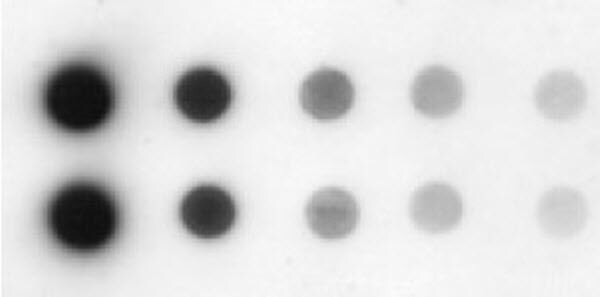Dna Slot Blot Protocol

The DNA (ng range) to stain is most probably denaturalized ssDNA (Urea/SDS backextraction from the TRIZOL inter-phase) and it's blotted on a positively charged Nylon membrane. A dsDNA antibody. Dot-blot is one of biological methods that are normally used in research laboratories and especially in the diagnostics. It is the most commonly used method for identification and immunodetection of particular proteins which may be markers of various diseases. The nucleic acid mixture is blotted to a membrane where the hybridisation is carried out. The difference between dot and slot blot procedures is in the way that the nucleic acid mixture is blotted onto the membrane. In dot blotting the nucleic acids are blotted as circular blots, whereas in slot blotting they are blotted into rectangular slots.

Dna Slot Blot Protocol Assay
- Walsh, P. S., Metzger, D. A., and Higuchi, R. (1991) Chelex® 100 as a medium for simple extraction of DNA for PCR-based typing from forensic material. Biotechniques4, 506–513.Google Scholar
- Walsh, P. S., Varlaro, J., and Reynolds, R. (1992) A rapid chemiluminescent method for quantitation of human DNA. Nucleic Acids Res.20, 5061–5065.PubMedCrossRefGoogle Scholar
- Waye, J. S. and Willard, H. F. (1986) Structure, organisation and sequence of alpha satellite DNA from human chromosome 17: evidence for evolution by unequal crossing-over and an ancestral pentamer repeat shared with the human X chromosome. Molec. Cell. Biol.6, 3156–3165.PubMedGoogle Scholar
- Whitehead, T. P., Thorpe, G. H. G., Carter, T. J. N., Groucutt, C., and Kricka, L. J. (1983) Enhanced luminescence procedure for sensitive determination of per-oxidase-labelled conjugates in immunoassay. Nature305, 158,159.CrossRefGoogle Scholar
- Velleman, S. G. (1995) Quantifying immunoblots with a digital scanner. Biotechniques18, 1056–1058.PubMedGoogle Scholar